German, 16th century.
Ring size U UK / 10 US.
The heavy, high carat gold ring weighs 20 grams.
The ring is engraved with the owners initials ‘B G’ above a heraldic crest engraved with a geometric symbol incorporating a crucifix with an inverted ‘V’ which appears to form the letter ‘A’. Merchants marks were chosen by their owners as a form of personal cypher and so it is almost impossible to decipher the owner of many merchants marks as they were not governed by the strict regulation and recording that heraldry laws dictated.
Merchants rings were engraved with geometric symbols used to mark their goods or personal belongings and was used instead of a coat an arms for those not entitled to them. Most merchants in the sixteenth and seventeenth century had marks, easily identifiable and formed with a few strokes of the brush. Many merchants rings also bear religious or talismanic inscriptions or imagery, combining a spiritual with a commercial function. The shape of the shield on this example draws direct parallels to the heraldic shields and jewels of this period in Germany.
Similar examples in museums include and are not limited to:
The Victoria and Albert Museum, accession numbers: M.223-1975, 717-1871 and M.341-1975
The British Museum, registration number: 1872,0604.391


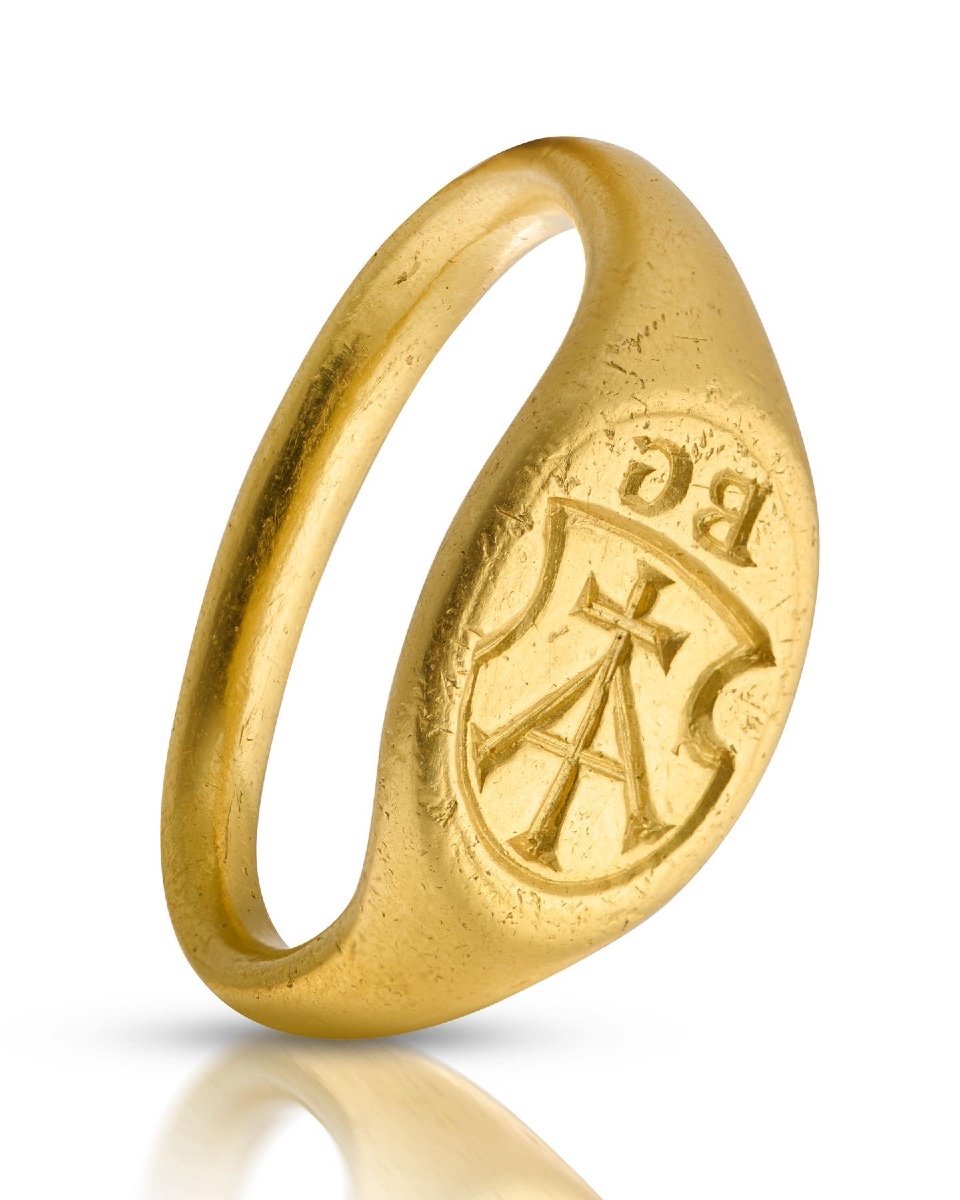
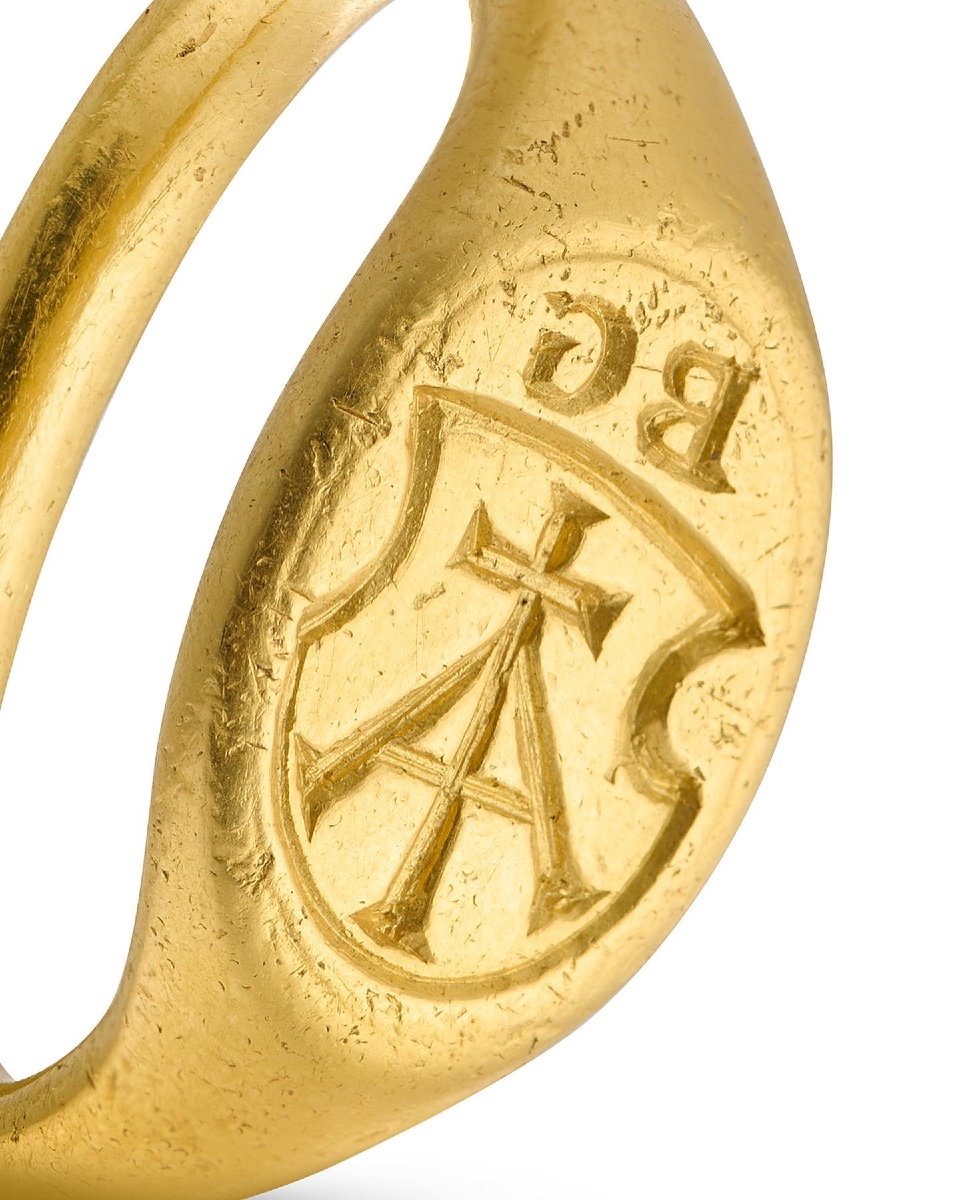
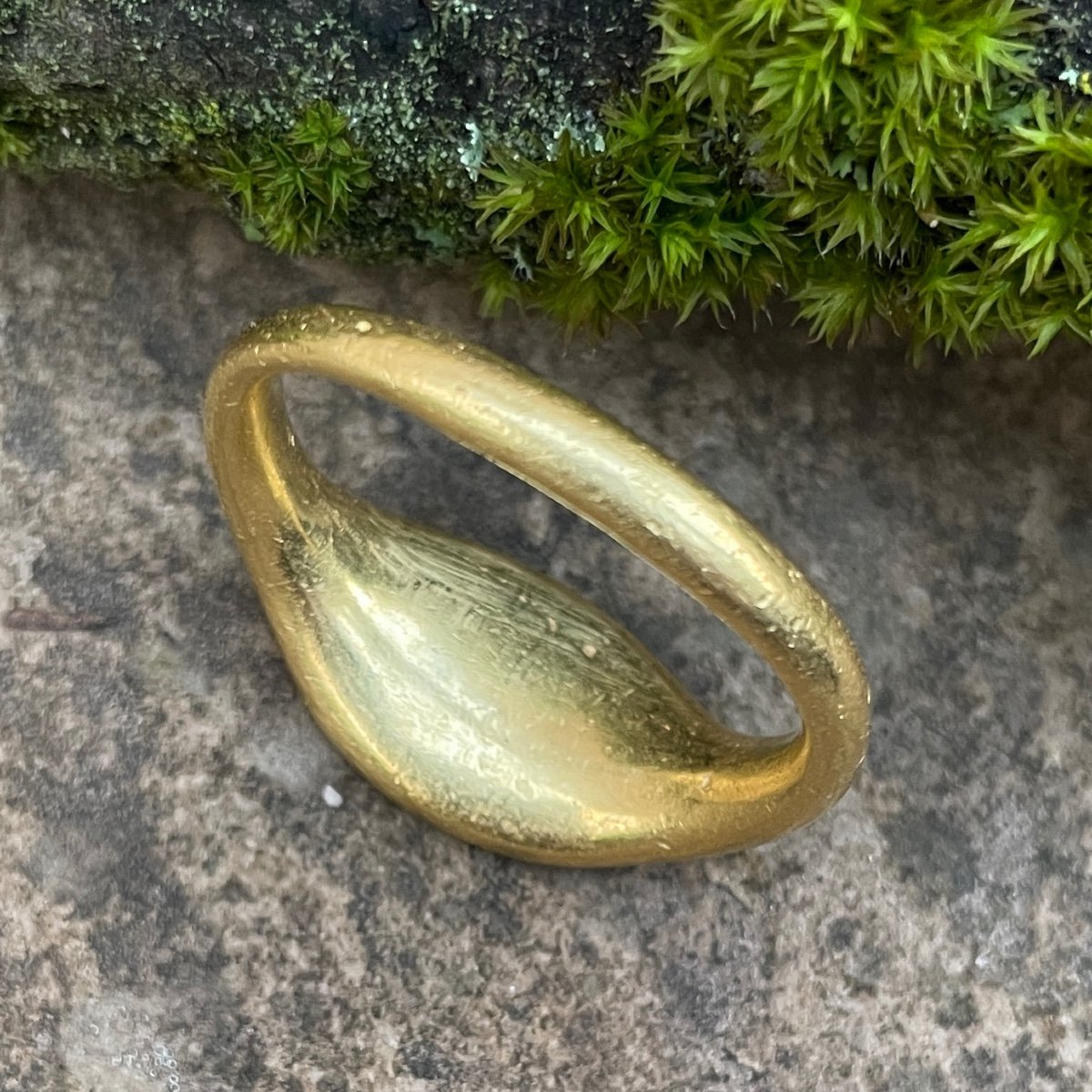
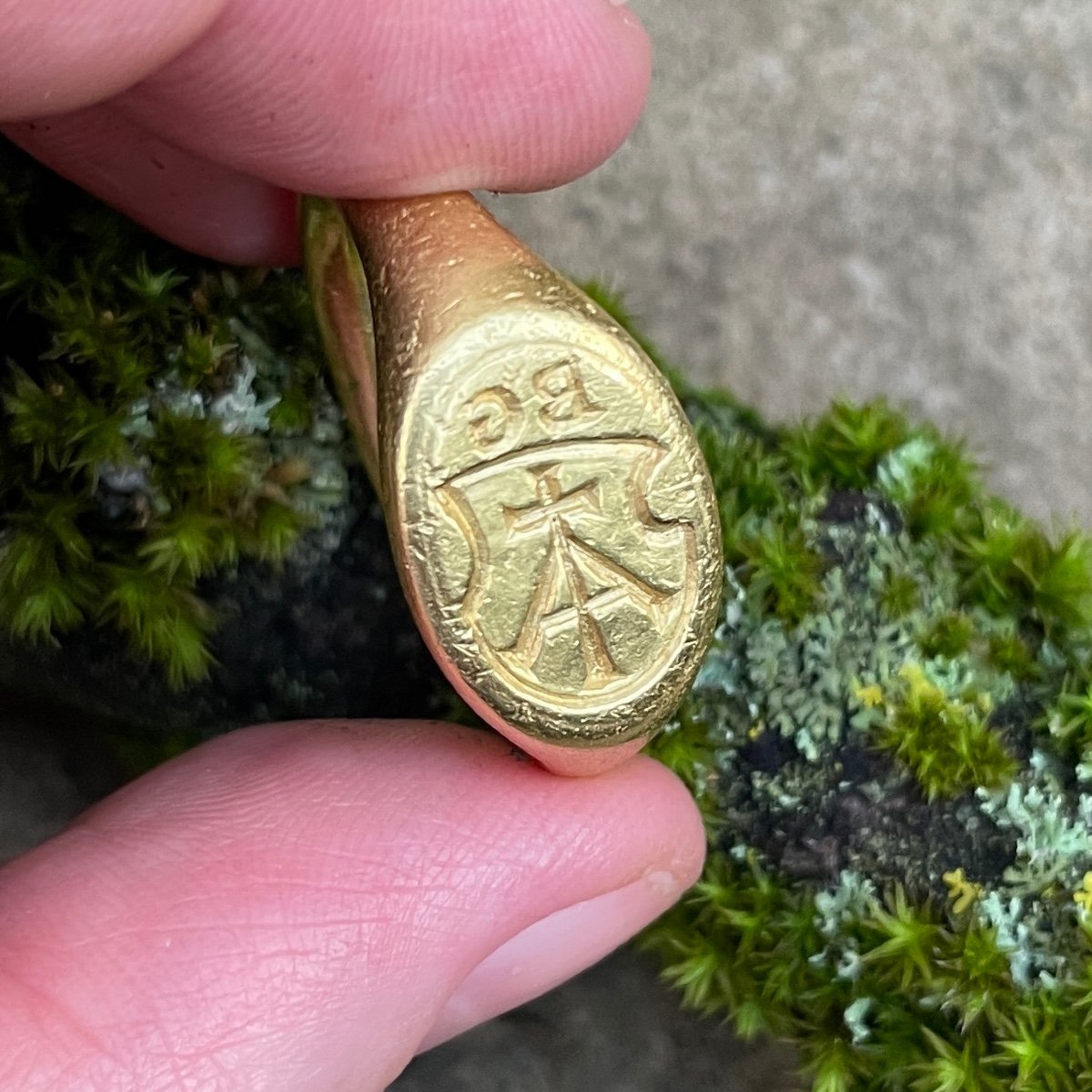
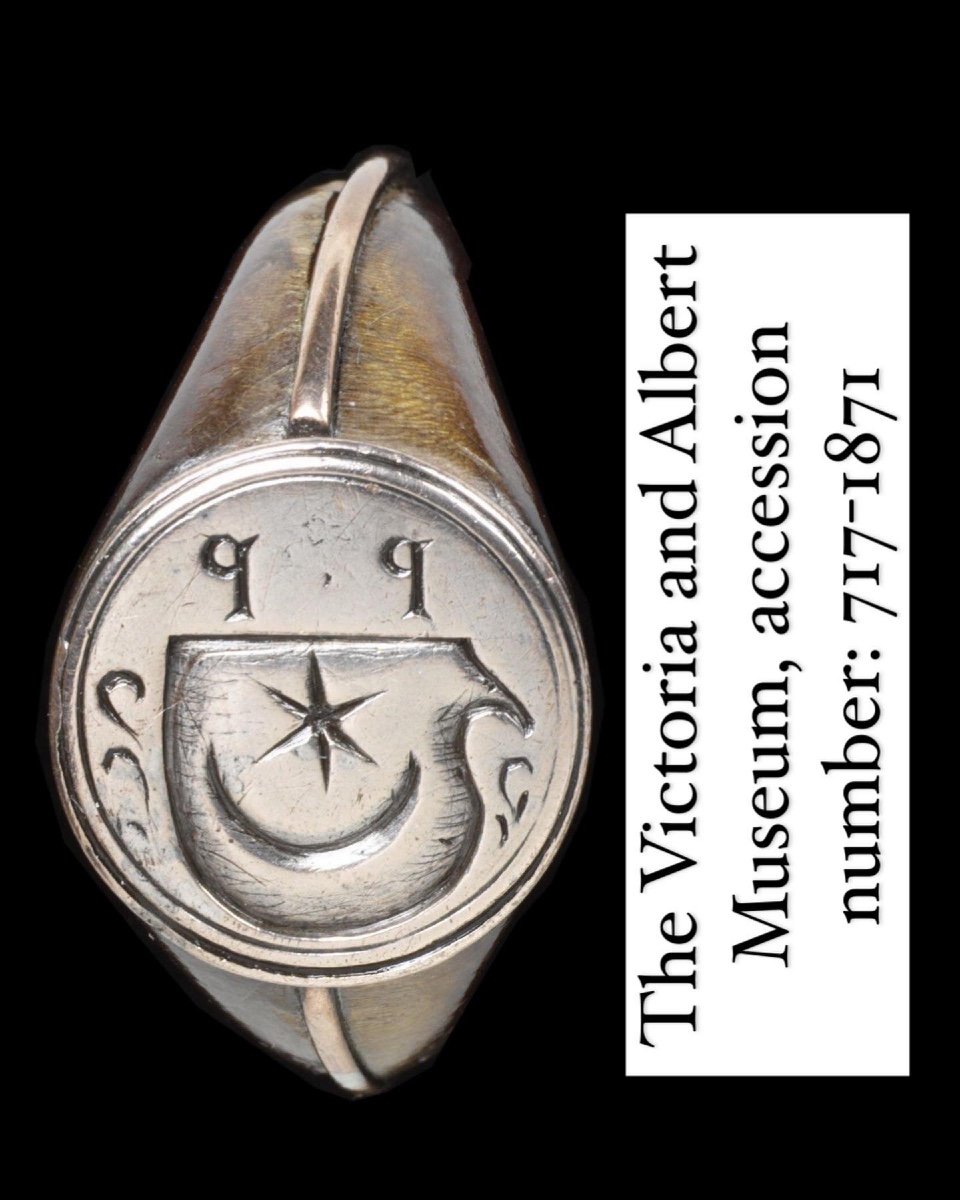
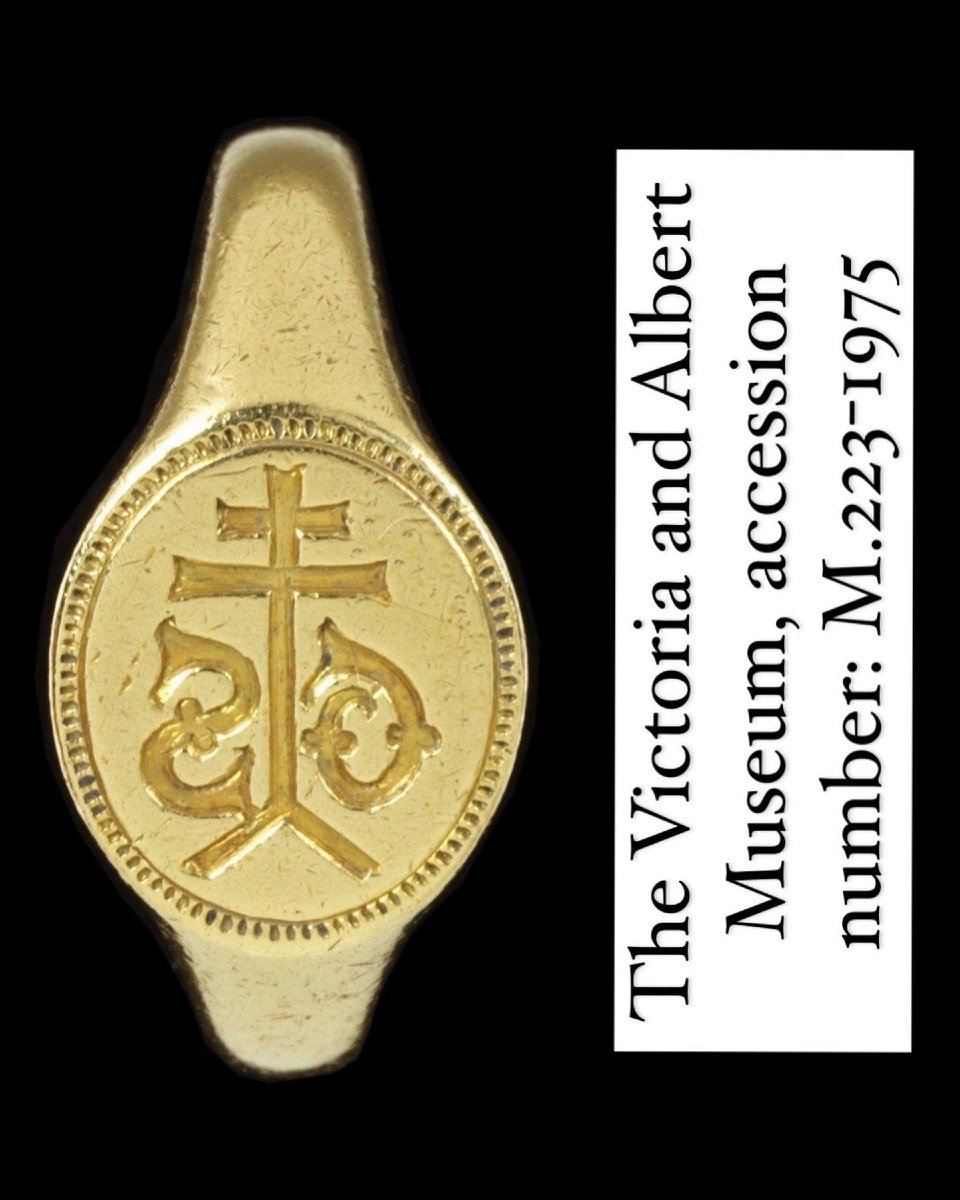
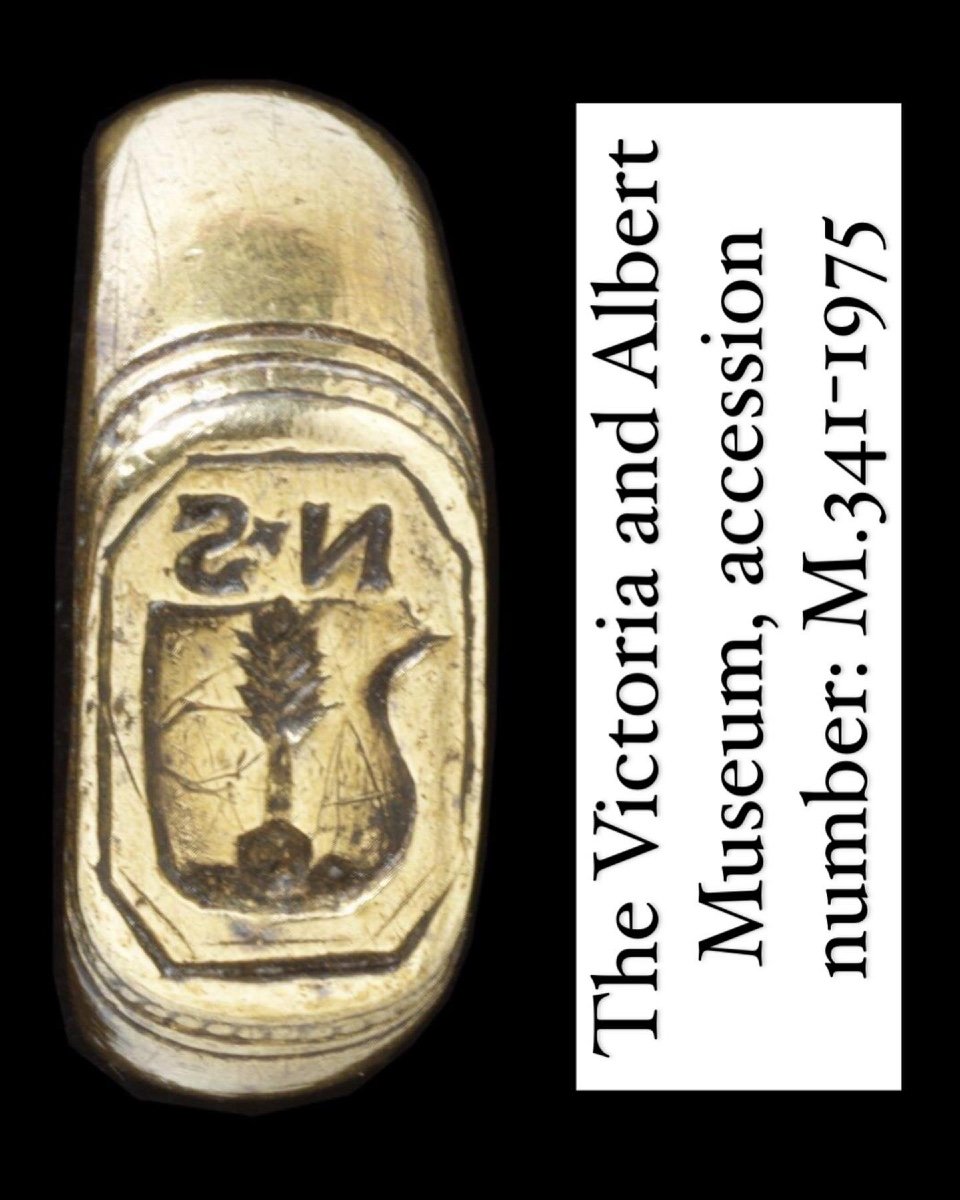
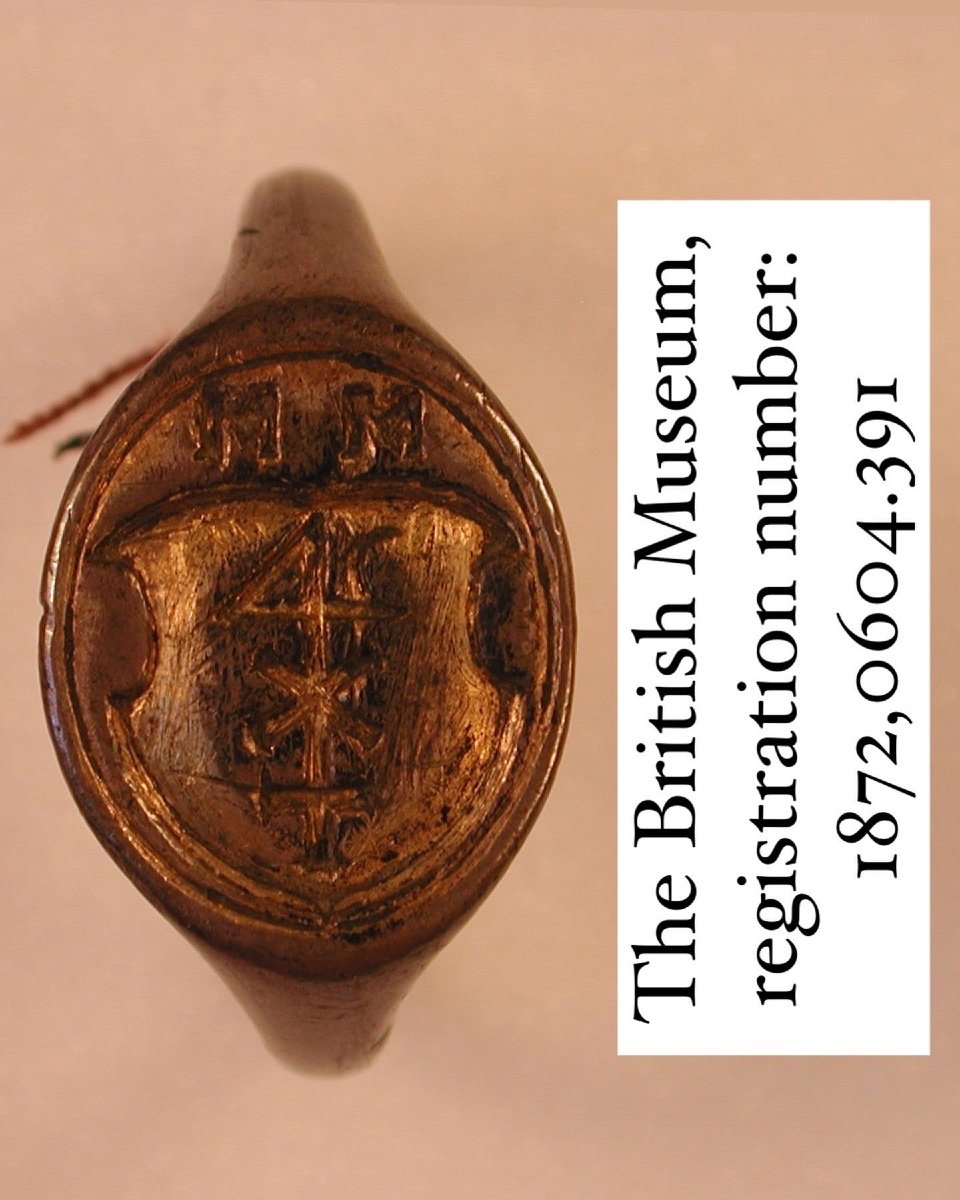
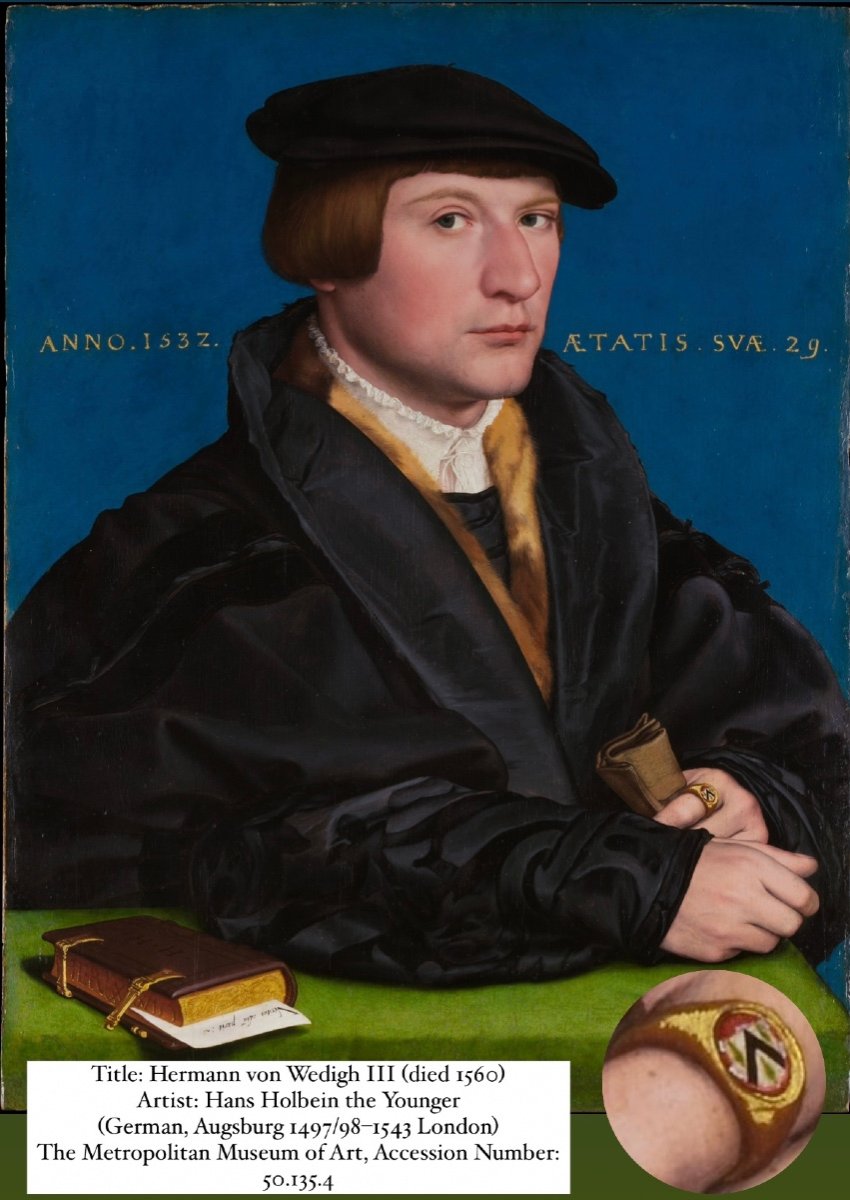
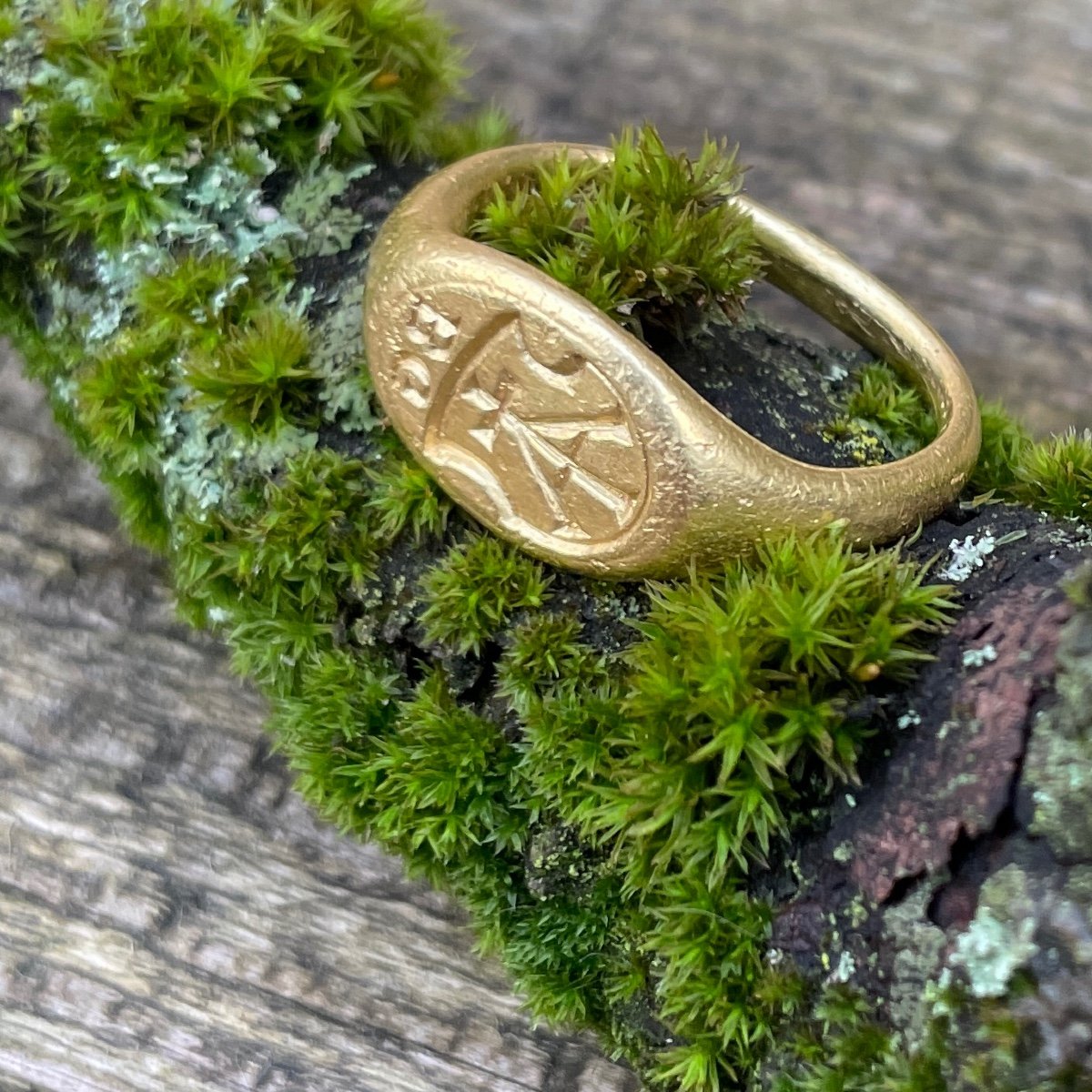
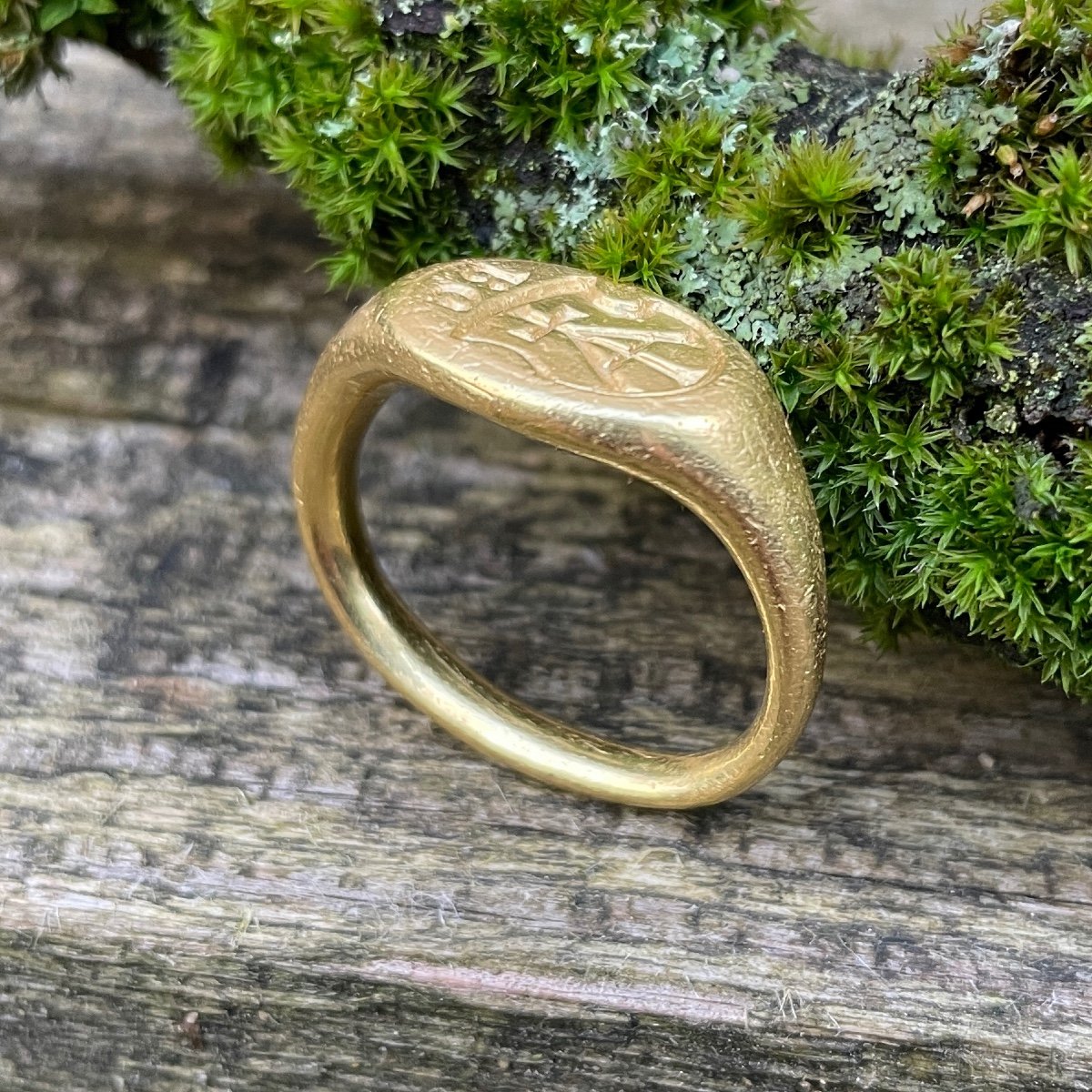
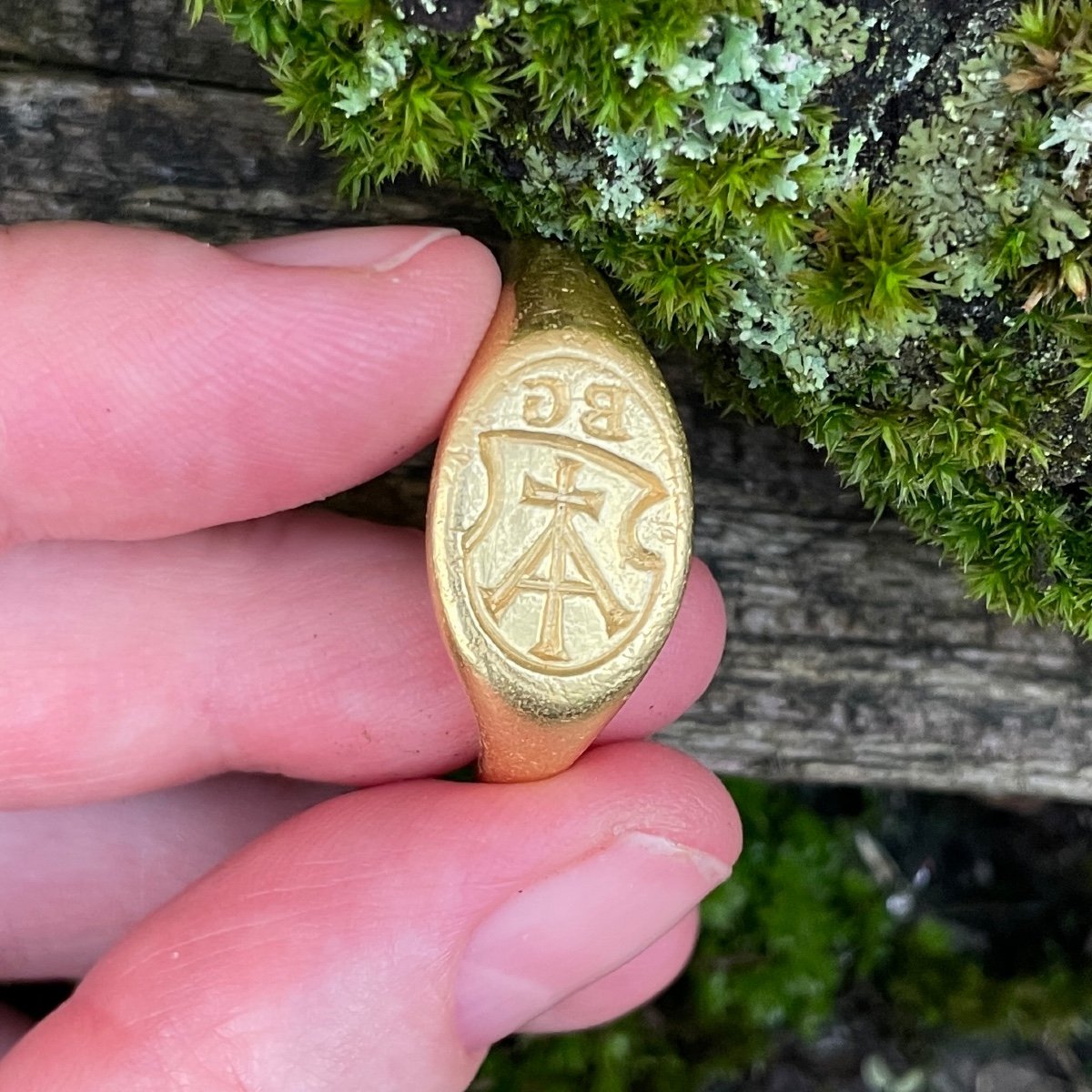













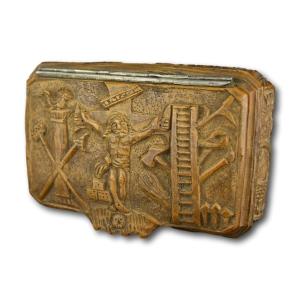
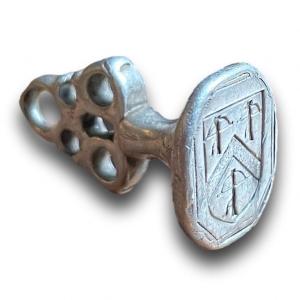


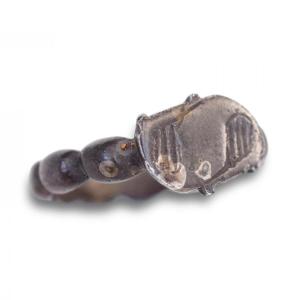
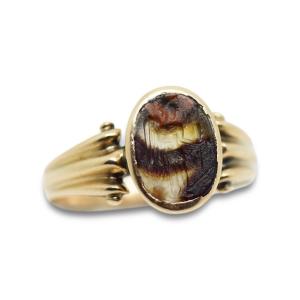


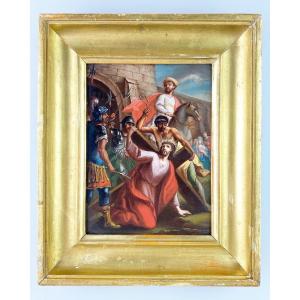
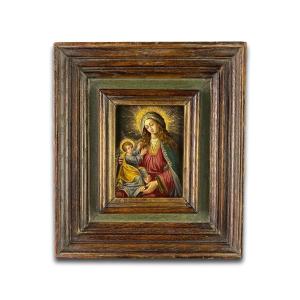
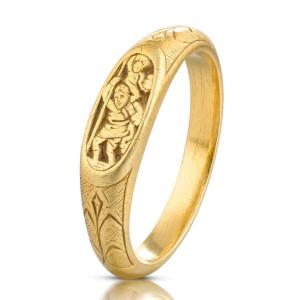




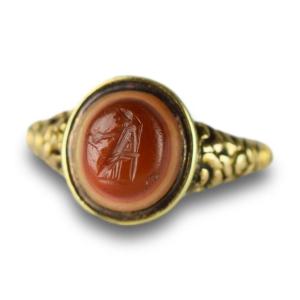
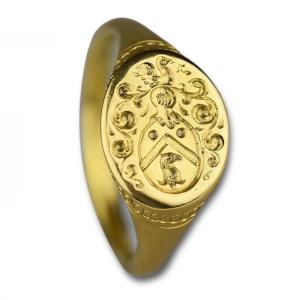






 Le Magazine de PROANTIC
Le Magazine de PROANTIC TRÉSORS Magazine
TRÉSORS Magazine Rivista Artiquariato
Rivista Artiquariato